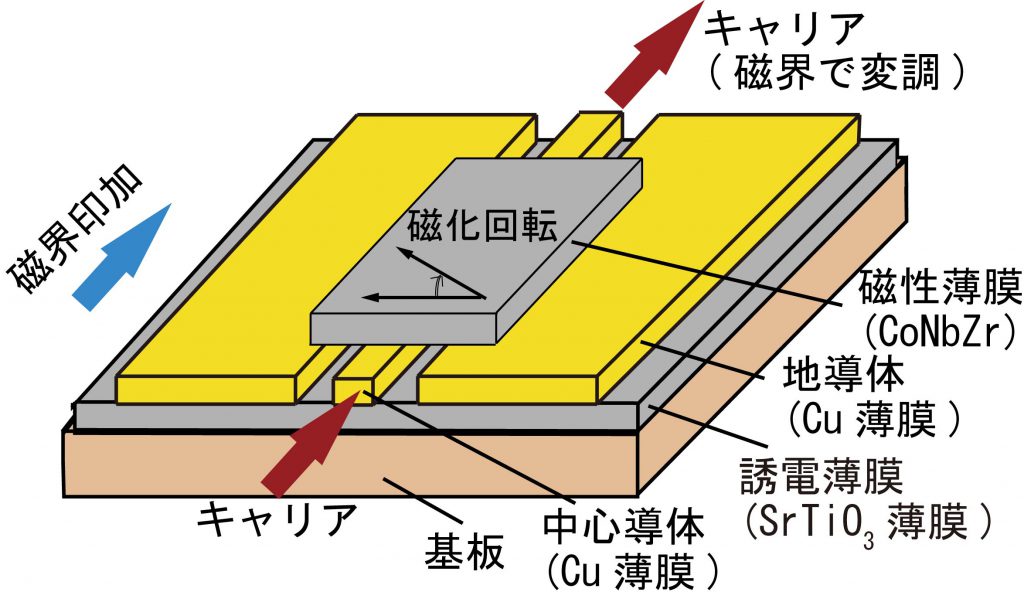The magnetic field generated by the heart (cardiac magnetic field) is very weak, less than one-millionth of the geomagnetic field (Fig. 1). In the past, such magnetic fields originated from the body were measured using superconducting quantum interference devices (SQUIDs) operating at low temperature.
Our laboratory has developed the world’s most sensitive thin-film magnetic sensor operating at room temperature (Fig. 2). Figure 3 shows the signal waveform of the measured magnetic field of the heart. In the future, it is expected that this magnetic field sensor will be used to determine the location of disease in the heart. In addition, this sensor is inexpensive and is expected to be widely used in general hospitals.


The principle of this sensor is that when a weak magnetic field is applied to a magnetic thin film (a magnetic material as thin as a few microns), the magnetization inside the magnetic material (a small azimuthal needle) rotates, resulting in a large impedance change. With this sensor, our Laboratory has achieved the world’s highest sensitivity of magnetic field detection (7×10-13 Tesla).

Without magnetic shielding, QRS waves specific to the magnetic field were measured in synchronization with the ECG. The R wave is dominant near the left ventricle (right side of the figure above), while the S wave is strongly observed near the center, suggesting that the magnetic field was accurately measured.

